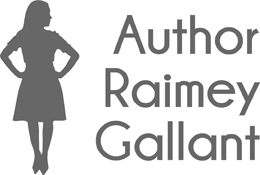I have a hard time reconciling actions when characters don’t know why they’re doing them. One or two instances of this in a story isn’t so bad, but more than that, and I start considering whether I should DNR the book. Click the title above to continue reading.
Tag: fiction
How to de-emphasize characters #AuthorToolboxBlogHop
Below is a list of ways you can de-emphasize or delete some of the smaller characters in your manuscript. Click the title above to continue reading.
How to create atmosphere in a scene through parallel action #AuthorToolboxBlogHop
There’s a scene in Gillian Flynn’s Sharp Objects that gave me goosebumps, except the action responsible for said goosebumps had nothing to do with the plot. Click the title above to continue reading.
How to spice up setting with an event (#IWSG blog hop)
In Jessica Strawser’s debut Almost Missed You, two characters have a life-changing date at Cincinnati’s Lumenocity, an orchestra-curated light-show. Anyone remember the scene when Harrison Ford’s Richard Kimble slips into Chicago’s St. Patrick’s Day Parade to evade pursuers? How much more exciting does Pride and Prejudice become once the Bennett sisters have a ball to look forward to? Some of these events are more integral to plot than others, but all of them make the stories they’re included in more interesting as a result. Click the title above to continue reading.
The Lady Bird way to show passage of time #AuthorToolboxBlogHop
I was watching Lady Bird recently. It’s summer in the beginning when the protagonist breaks her arm, and then a whole bunch of stuff happens, including Thanksgiving, and then cut to her cast being taken off, and I instantly had a sense of how much time has passed. Click the title above to continue reading.
3 techniques to reduce dialogue tags and cues in group scenes #AuthorToolboxBlogHop
With only two characters, we can get away with less dialogue tags and cues—also referred to as character, emotion, or action beats—because if we know who’s speaking first, we can intuit that the next pair of quotes encloses dialogue from the only other character in the scene. But with groups of more than two speakers, scenes can become cluttered with dialogue tags and cues, which can make a passage more stilted than it needs to be. Here are three techniques that can help. Click the title above to continue reading.
9 factors to consider when trialing critique partners (#IWSG Blog Hop)
When on the lookout for critique partners, a genre match is important and you should have at least one, but it isn’t always the most important factor. Take a look at the nine criteria below, and the next time you’re scouting for a new CP, you may want to consider placing more emphasis on the eight that come after genre. Click the title above to continue reading.
How to freshen up cliched expressions #AuthorToolboxBlogHop
I often read blogs where writers are told to avoid overused expressions like the plague. In my humble opinion, there are ways to update cliches so that they resonate, more often than not to humorous effect. Click the title above to continue reading.








